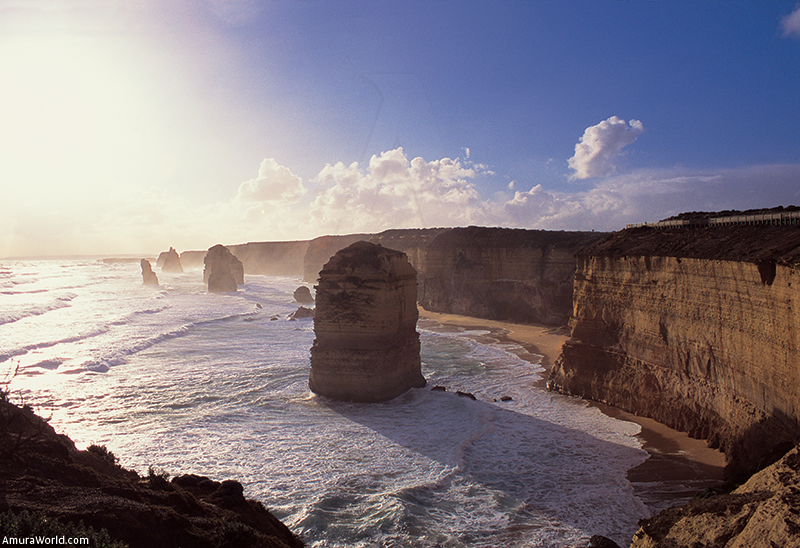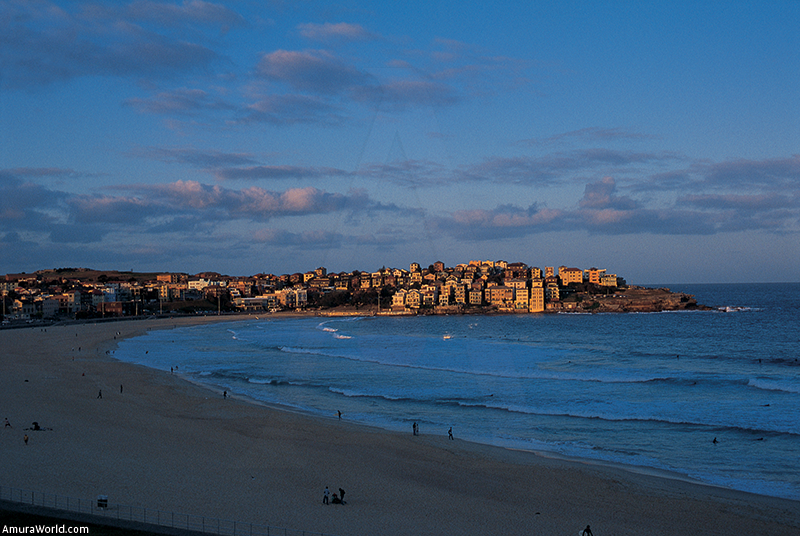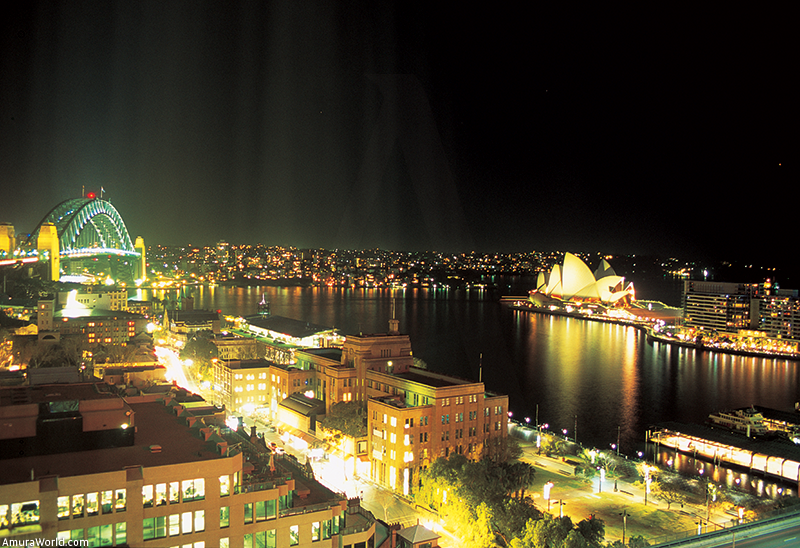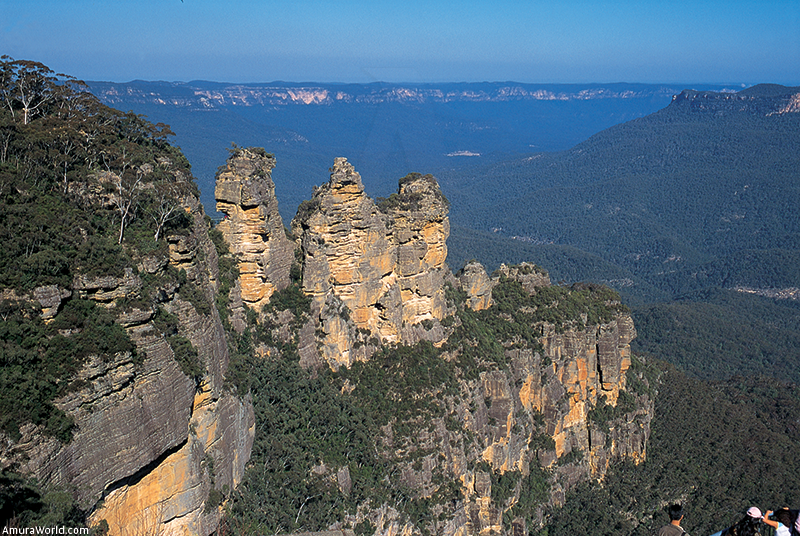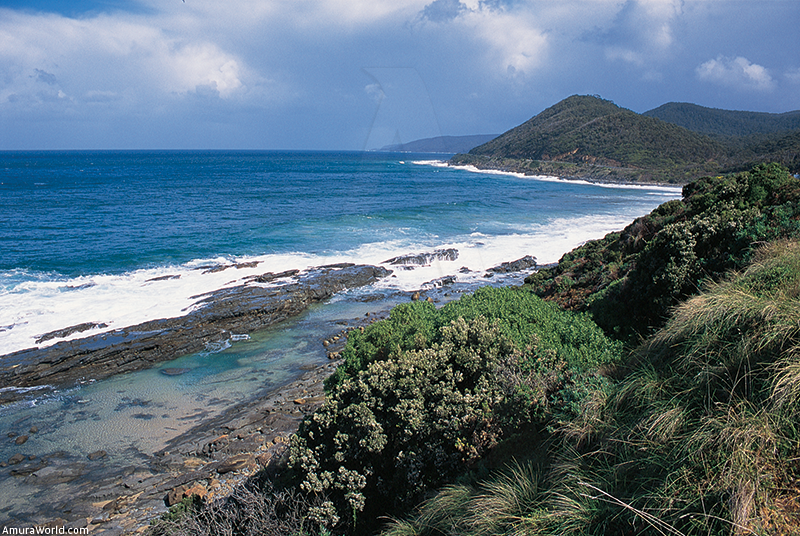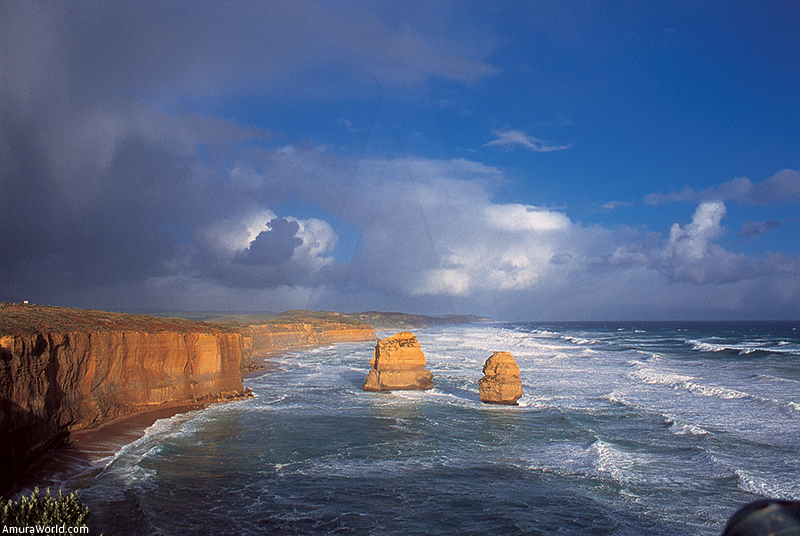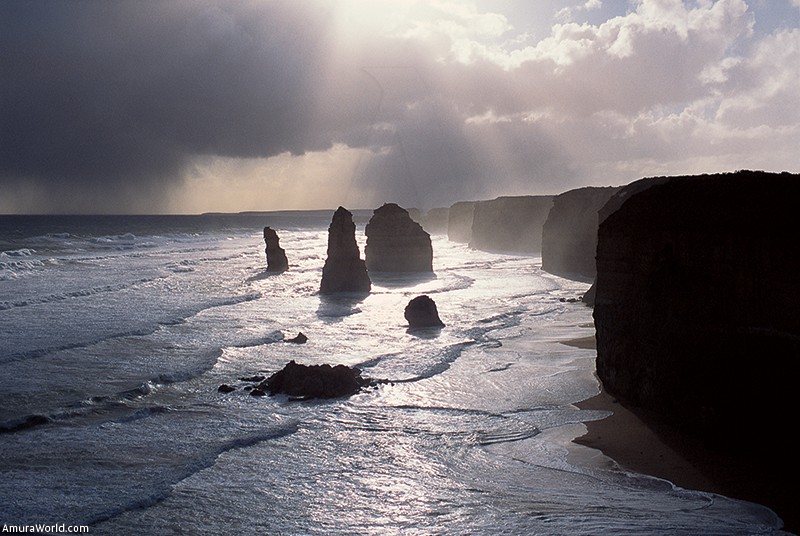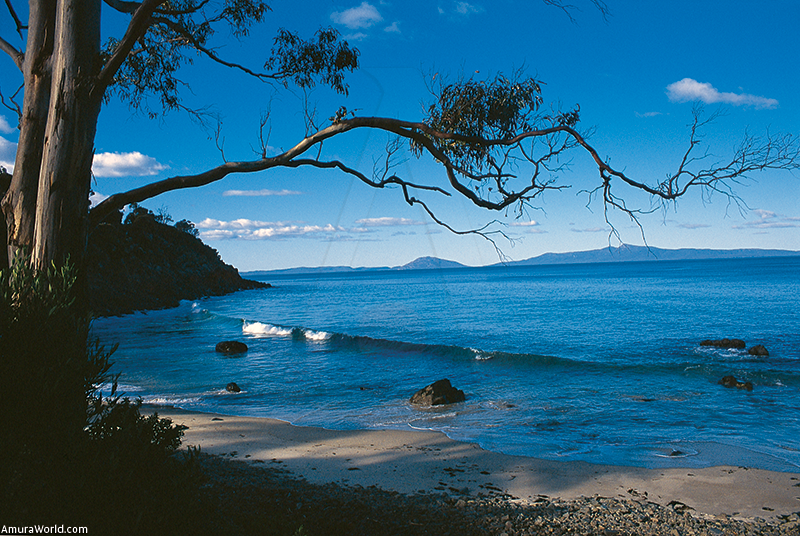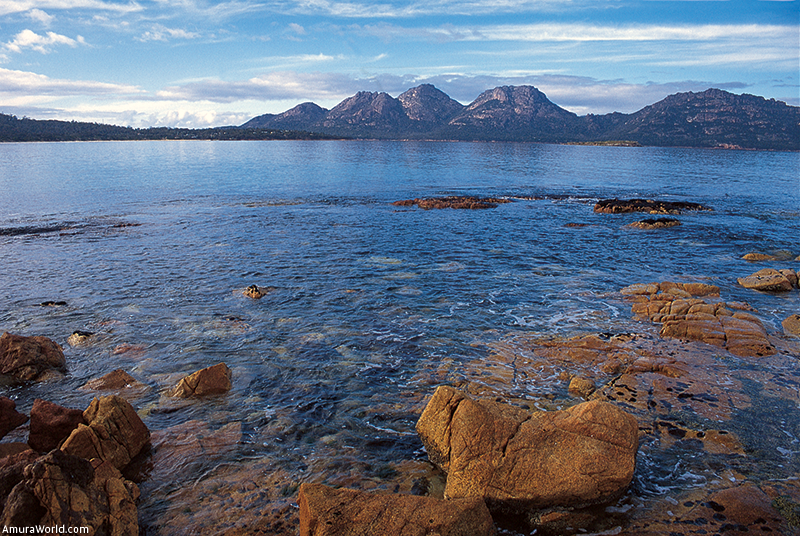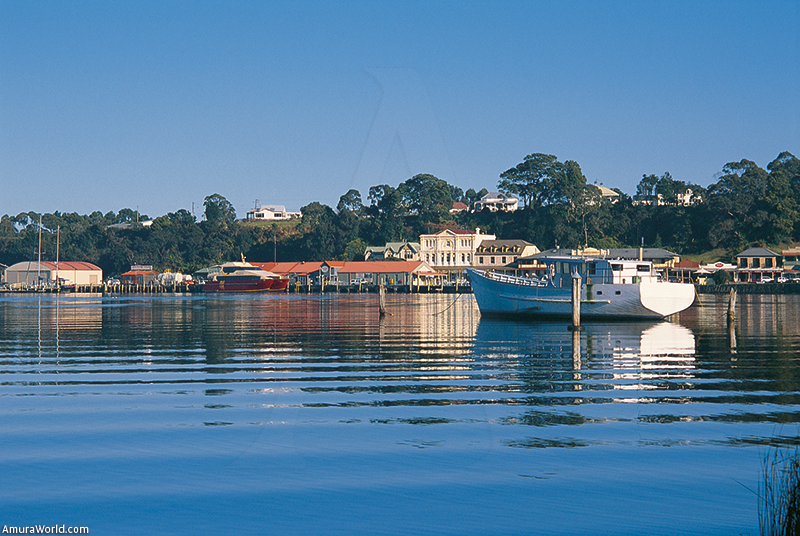Sailing by Sydney, Melnourne and Tasmania
Australia is an immense continent surrounded by seas that have etched a beautiful coast of extraordinary beaches, deep, unusual bays and surprising cliffs. The distances are huge and sailing along the length of its coast would be a challenging adventure in which we would face dangerous currents and threatening weather changes.
The northeast coast is where the world’s largest barrier reef is located; the north coast, with swamp areas, is a peaceful sea; the west coast and particularly the Perth region, is considered the most wild and beautiful; and the south coast is the windy area of stunning cliffs.
Our journey was focused on exploring the east, where we discovered places of great beauty. Inhabited by Aborigines, Australia was discovered by Captain James Cook in 1768, while Abel Tasman discovered Tasmania in 1642. Cook declared it a Crown Colony in 1770.
However, it was not until 1787 that the First Fleet, 11 ships with a cargo of grains, animals, soldiers and English prisoners (548 men and 188 women), sailed to this unknown continent described by Cook.
Little by little, this society of prisoners and delinquents, controlled by soldiers, became organized. Food was rationed for16 years, until the colony became self-sufficient thanks to the cultivation of crops and the breeding of sheep. Those that were very rebellious where threatened with deportation to the terrible Port Arthur jail in Tasmania.
In 1851 gold was discovered in the Blue Mountains and the first voluntary, free settlers arrived. In 1851 the number of inhabitants grew from 437,665 to 1,151,947. More and more people arrived and while some searched for gold others became farmers. In this way, on January 1, 1901, Australia became a nation under British rule and nowadays the British monarchy is still the head of the Australian state.
Land of adventures, vast spaces, deserts and mountains, Australia is an invitation to explore a continent of immigrants, colorful lands and a fabulous coast.
Sydney
The Opera, which overlooks a gigantic, naturally sheltered bay with several marinas, is one of the symbols of the country. The mouth of the bay, guarded by North Head and South Head, is very narrow and its calm waters are protected from currents. It is an extraordinary place in which to glide on a sailboat.
Danish architect Jorn Utzon designed the Opera, begun in 1956 and finished in 1973. This building, which dominates the peninsula, is next to a steel bridge that spans the water and watches the coming and going of ships. Its shape is outstanding among the skyscrapers that appear on the scene.
At the beginning of the 19th century it was a dangerous area of criminals, prostitutes and whale hunters. Now, it is a popular neighborhood where people go out at night and where the Park Hyatt features the best seafood as well as a superb view of the Opera and downtown.
The Four Seasons, one of the hotels that towers over the port, offers a fabulous view of this spot as well as the incredible Sydney Harbour Bridge with its metal infrastructure.
Exploring the streets near the sumptuous Sofitel hotel includes the pleasure of discovering a clean city with museums, elegant stores and a botanic garden that shelters a great variety of plants, a place where white cockatoos come close and parrots build their nests. It is a jewel in a city where the cathedral dominates the tranquility of the skyscrapers.
Macquaire Street invites you to discover the ancient, grand neoclassic buildings while King Cross, with a great variety of bars and discos, is the city of entertainment.
The suburbs extend over hills adorned with pleasant houses and Bondi, towards the south and one of the best beaches for swimming and surfing, is a popular place with restaurants and cafes, bars and encounters.
Manly, to the north, is the most popular beach. Its main street is colorful and lively and crowded with surfers who are always hopeful that the next wave will be the best.
We dedicated a whole day to sailing around the bay, which extends up to 20 km (12.4 mi) inland until it reaches the mouth of the Parramatta River, discovering beautiful views of the city and its immense port, which is distributed along the whole bay. The most scenic part is the one found from the entrance to the bay to Harbour Bridge, an 8 km (5 mi) voyage dedicated to exploring the bays of this irregular coast dominated by capes with marinas, docks and islands and where beautiful houses are settled on the hills. It is a pleasant sail in calm waters. We docked in Finger Wharf to dine in the best restaurants, shopped in Manly and, in Bradley’s Head, discovered the Sydney Harbour Park and its hikes through places of primeval nature.
In Sydney Cove we found the Circular Quay, from where the ferries that ply the bay set sail, taking people to their homes; and the commercial port, hidden past the bridge in a naturally protected zone.
In the morning we saw how the bay comes alive with the ferries and the massive cruise ships that cross it. This huge body of water never rests.
Passing North Head and South Head, we reached the open sea and headed south, following the beautiful cliff that forms this peninsula guarded by the Hornby and Macquaire lighthouses. We passes Bondi when the first surfers where arriving, followed the entrance to Botany Bay, another huge bay in the heart of an industrial area, and reached Port Hacking. The coast became flatter and, in the horizon, we saw the Blue Mountains as well as the Royal National Park, a coastal park with dramatic cliffs, hidden beaches and a lush wet forest. We passed Wollongong, with its pleasant beaches of white sand and surfing waves, and discovered a varied coast of hills, capes and beautiful deserted beaches.
Bass Point is a good place for scuba diving; Kiama, a pleasant coastal town, is famous for its blowhole, where the waves throw the water 60 mt (196 ft) into the air; and we explored long Seven Mile Beach before reaching Gerrinngong. After that, we arrived in Shoalhaven, a popular vacation destination located at the edge of the towns of Nowra and Bornaderry, with its bays and small mountains that shelter the view.
Finally, Jervis Bay appeared, a beautiful coast of white sand beaches framed by a fabulous eucalyptus forest and a turquoise sea that plays with its calm waves. Passing the peaceful town of Huskisson we docked in the sheltered cove. So much silence and the beauty of Booderee Park astounded us while we enjoyed the marvelous sunset.
In the morning we came ashore and Manolo took us along the pathways where we observed parrots, scandalous kookaburras and pink cockatoos. The park is a surprising world of fauna and fabulous isolated beaches.
We began our return to Sydney and then went towards the Blue Mountains to admire the marvelous scenery from Echo Point near Katoomba. The Three Sisters, a strange rock formation, dominates the cliff that borders an immense canyon covered with an impressive eucalyptus forest and where the paths make their way through abundant tree maidenhair ferns and trunks that create strange figures.
We ascended the cliff thanks to the Scenic Railway, the steepest train in the world (45 degrees), built in 1880 and used for the transport of miners.
One of the pleasures of the Blue Mountains is spending a night in Lilianfels in front of the fireplace enjoying an exquisite diner.
Melbourne
We reached Melbourne by plane with the firm intention of exploring the vast Port Phillip Bay and sailing to the 12 Apostles.
Melbourne is a true metropolis where the traces of the past, with its buildings from the beginning of the 20th century, blend with the modern architecture that is located on the bank of the Yarra river.
It is the city of the wind that infiltrates the wide avenues of the center, which form a network of right angles, as well as the wind that allows sailboats to enjoy themselves in the great bay but that makes navigating difficult in the Bass Strait, which lies between the continent and the island of Tasmania.
We visited Corio Bay where Geelong port, so famous in the height of the gold rush era, is located, and reached the narrow exit to the sea known as “The Rip”, one of the world’s most dangerous sea routes and where many ships have sunk. It is delimited, to the west, by Bellarine Peninsula with its beautiful sand dunes and, to the east, by Mornington Peninsula, a long, white sand beach that is a favorite summer vacation spot of the people of Melbourne.
With great difficulty and strong winds, following a coast famed for its waves and currents, we reached Phillip Island, passing Seal Rock, inhabited by Australia’s largest colony of seals, and dropped anchor is protected Cat inlet. Phillip Island is renowned for its Grand Prix circuit but our goal was to admire the parade of the world’s smallest penguins that surface from the sea at sunset to return to their nests. The intense cold reigns but it is a beautiful sight.
The next day, continuing along the coast to avoid the strong gusts of wind, we explored the west coast, which is shielded by green hills where sheep graze and where there are beautiful towns. From Torquay to Apollo Bay, we found long, white sand beaches lying at the foot of eucalyptus-covered hills with waterfalls, mysterious coves and mansions that admire the sea.
Since we could not pass the Otway Cape because of the strong winds, we docked in the small Apollo Bay marina and discovered koalas in the canopy of a eucalyptus forest.
The highway zigzagged along the green hills until we reached the 12 Apostles, those amazing formations detached from the sandy cliff. It is a spectacular panorama where the sun changes the relief, the waves assault the gorges and the wind attacks the faces. The Apostles are those abrupt hillocks that were separated from the coast by erosion of the sea. The next day we retuned to Melbourne to enjoy its pleasant nightlife, when the residents look for warmth in the bars.
Tasmania
We flew to Hobart, in south Tasmania, an enchanting port in a magnificent bay and the second oldest city in Australia, located on the estuary of the Derwent River. Sailing from the Hobart marina we explored Storm Bay with its beautiful coastal beaches and tranquil waters protected by Bruny Island to the west and the Tasman Peninsula to the east. We went ashore in Port Arthur to explore the ruins of the famous jail that held the most dangerous prisoners.
This charming peninsula features high cliffs more than 100 m (328 ft) high, fabulous gold sand beaches and cozy, small bays. The entire Tasmanian coast is a string of beaches, bays and cliffs framed by forests or grasslands. At the end of the day we reached the spectacular Great Oyster Bay, protected by the Freycinet Peninsula, and anchored in the Coles Bay marina, where we lodged in the exceptional Edge of the Bay. An excellent dinner was awaiting us at the hour that the sea breeze calmed down.
The next day we explored the coast of the Freycinet National Park, climbing its round, red rocks and discovering Wineglass Bay from the height of the mountain, an enormous body of water that opens to the Tasmanian sea when it is about to communicate with Great Oyster Bay.
We encountered kangaroos and a great variety of birds and, passing Schouten Island, which protects the entrance of the bay, we continued our voyage towards the north, exploring Wineglass Bay and the beaches until we arrived in Saint Helen Bay, where we enjoyed a seafood feast on a floating ship. Later we returned to anchor again in Coles Bay and reached Hobart the next day.
We discovered the rest of Tasmania by road and encountered a surprising island of ever changing views, ranging from the plains of the north, where the Tamar River, with its banks covered in vineyards, runs to Launceston, a cozy city. The Cradle Mountains National Park invites visitors to explore the snow-covered mountains such as oddly formed Cradle Mountain and Mount Ossa, 1,617 m (5,305 ft) high and Tasmania’s tallest. Because of its scenery, coast, towns and exquisite, refined good life; Tasmania is a beautiful world. Australia is a different, immense continent that knows how to surprise, intrigue and conquer.
Text: Patrick Monney ± Photo: Patrick Monney.

